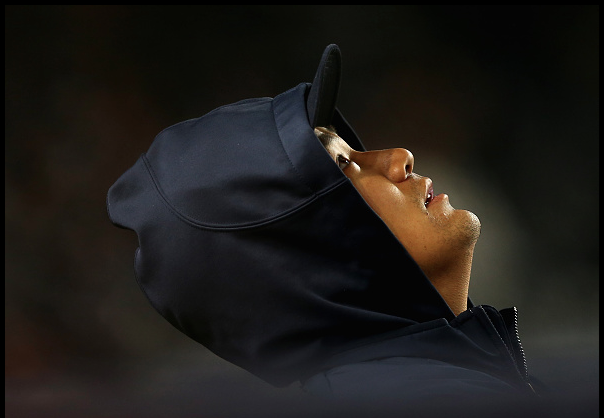Nothing screams “Welcome!” to the opening week of the 2015 Major League Baseball season like manufactured crises.
That’s right, New York baseball fans—after suffering through a hellish winter and before that an autumn baseball season devoid of New York’s two clubs, you were neglected the optimism-filled Opening Day you so desired and deserved. (It was a different story for Mets fans until they lost their closer before the opener and then fell to the Nationals two days later in D.C. only to bounce back with their ace Matt Harvey on Thursday.)
Thought you’d make it through the opening week without doomsday predictions and impending disasters hanging over your head? How naive! Forget it, folks. This is New York. And with tabloid sales plummeting faster than Congress’ approval ratings, you better believe there’d be plenty of incentive for writers to jump right into midseason form and make immediate judgments without taking the appropriate time to reflect on what’s at stake after one game: absolutely nothing.
The fevered pitch panic that threatened to bring the Yankees empire to its knees after only four innings at Yankee Stadium on Monday was a direct result of a poor outing by Yankees ace Masahiro Tanaka, who was an early Cy Young contender last year before he partially tore his UCL—an injury that sometimes leads to the dreaded Tommy John Surgery. No doubt, Tanaka was ineffective Monday. He surrendered five hits, five runs (four earned) and walked two Blue Jays over four frames. How dare he! Some observers were so incensed that they all but demanded he go under the knife right there on the mound. Why not? It’s not their bodies.
It’s no shock that Tanaka’s initial start following an injury-shortened rookie season in the Bronx was scrutinized the way it was. When you invest $155 million in a player with a seemingly fragile elbow that could explode at any time, it’s understandable that scouts and media would react to a disappointing outing. But the reaction, even by New York standards, verged on hysterical.
All spring, the talk centered around Tanaka’s perceived reduced velocity, which he attributed to throwing more two-seam fastballs rather than the more common four-seam fastball, which typically travels at greater speeds. On Monday, his fastballs hovered in the low 90s, sometimes topping off at 93 mph. Tanaka has never been a flamethrower, and his fastball will never be confused with fellow Yankee pitcher Dellin Betances’ upper-90s heater or even Andrew Miller’s mid-90s fastball, for that matter. Last season, Tanaka’s fastball averaged 91.1 mph and his two-seamer 91.7 mph, according to FanGraphs.com. Those are hardly Randy Johnson-like averages. Still, the media, and even former aces (See: Pedro Martinez and Curt Schilling) are obsessing over the pace of those two pitches.
Until Tanaka makes his next start—and appears every five days after that—we won’t truly be able to form an informed opinion on the heralded Japanese ace’s post-partial-UCL-tear Pinstripes career. Despite two poorly located fastballs—one was deposited in the left field seats and the other smashed through the second base hole—Tanaka, as he did last year, had success with his devastatingly effective splitter. He even managed to strike out six Blue Jays Monday.
Was Tanaka’s miserable outing due to something as simple as poor location, or is he holding back out of fear of further damaging his $155-million elbow? Or is he really injured and just too stubborn to reveal problems with his arms out of fear of missing more time? If there is something wrong with his arm, we’ll surely find out in the coming weeks. You can’t stop nature from enforcing its will.
But for some observers, instead of preaching patience, they saw it prudent to blow one start out of proportion.
Of course, it’s necessary to question whether the Yankees and Tanaka acted appropriately last year when they sided with doctors who suggested the right-hander rehab his injury instead of succumb to a procedure that would’ve sidelined him for at least 12 months.
But until Tanaka’s arm blows up, which it may not, let’s at least give Tanaka a shot to show the Yankees he’s still the dominant pitcher he was the first half of last season and during his decorated career in Japan.
What a novel idea.





















